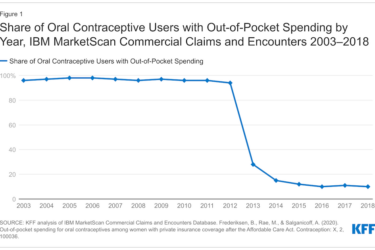 You have all probably gotten some emails about this website or that app that can give costs of various health plans in the new insurance exchanges. I’ve seen some that list plans county by county. People may be tempted by these easy tools because, on the surface, they look like a way around that pesky HealthCare.gov or some of the balkier state exchanges.
You have all probably gotten some emails about this website or that app that can give costs of various health plans in the new insurance exchanges. I’ve seen some that list plans county by county. People may be tempted by these easy tools because, on the surface, they look like a way around that pesky HealthCare.gov or some of the balkier state exchanges.
But there’s a problem. (There’s also a solution that I’ll get to, but keep reading.) The information on most of these plans is very general. And it’s “sticker” prices. Some don’t take into account the subsidies or other particular family circumstances. And that sticker price may produce enough “sticker shock” that people are scared off and don’t find out what they would actually pay, particularly if they are eligible for subsidies. Some of the calculators don’t include age, either, and that does affect what people will pay.
Nor do the calculators always produce the same estimated cost. I tried two different ones using the same information about a family I had spoken to in California. I got very different results – thousands of dollars different. Neither was close to what the family found when they did get on the California exchange. (In this case, the family’s costs did go up.)
The Arizona Republic did a consumer-focused story about the calculators in which they urged consumers to get on the real sites (which are – slowly – improving) and find out what the precise costs are for their unique family circumstances.
Summing up the advice of consumer advocates and policy experts, reporter Robert Anglen wrote: “Don’t stop. Continue through the registration process and shop for insurance based on specific individual details rather than the general information provided by calculators.”
The story also quoted one person who stopped precisely because of that sticker shock – and this anecdote took on added importance because the family’s current individual market policy is being cancelled and he needs alternatives.
“Steve Taylor, head pastor of the Lakeshore Bible Church in Tempe, said he stopped the registration process after seeing initial estimates that would cost him hundreds of dollars more than his current premium.”
(For what it’s worth, when I plugged in the limited information the article provided about Taylor and his wife into the Kaiser Family Foundation calculator, it came up with an option that was considerably less than they are paying now – but it’s a rough estimate and didn’t take into account their ages. Plus I don’t know if the Taylors have children, how old they are, whether they live in Arizona or if anyone in the family smokes. Update on Nov. 20: KFF has updated and improved its calculator.)
Just as I was about to finish writing this post, I learned of two calculators that do seem to be more specific and useful. Zeke Emanuel and Andrew Steinmetz wrote this op-ed describing two fairly sophisticated calculators that do a whole lot of what HealthCare.gov is supposed to do (calculating and shopping options but not all the verification that the government site has to do). One is on the website of Steve Morse. The other is called Value Penguin. When I plugged in the same scenarios in the two sites, I came up with fairly consistent price quotes and options for families without a subsidy. It was a little harder to compare with the subsidy. One gave actual quotes, while the other gave more general price limits with subsidies.
So – if you are interviewing people to try to get into the nitty gritty of what they will pay – or to try to dig into their claims about what their options are in 2014 if their plans are cancelled – be careful about what tools you use to analyze their situation. General parameters won’t help. Premiums depend on the specifics. Not health status, but age, location, family size and income.








